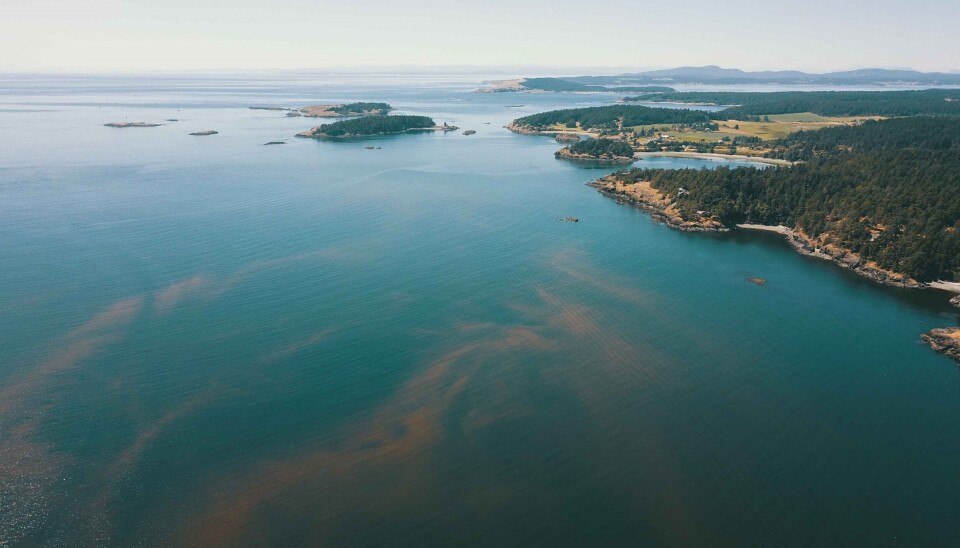
£355,000 training plan to battle algal blooms
SAIC-led programme will offer places to 1,800 professionals and students
A new training programme is being developed to help salmonid farmers mitigate the growing challenges to fish health and welfare presented by harmful algal blooms (HABs), a phenomenon primarily caused by climate change.
The Sustainable Aquaculture Innovation Centre (SAIC) has been awarded £250,000 from the Department for Environment, Food & Rural Affairs’ (Defra) UK Seafood Fund: Skills and Training Scheme to create a new skills initiative which will be free-to-access for around 1,800 sector professionals and students.
Developed in collaboration with rural skills council Lantra, and the Scottish Association for Marine Sciences (SAMS), the programme will be boosted by an additional £105,000 of funding provided by SAIC.
Standardising procedures
The training aims to ensure all producers across the UK are following standard operating procedures, developed as part of the Farmed Fish Health Framework, for detecting and reporting HABs in open coastal waters, leading to more effective monitoring and reporting that can be shared across the entire sector. A better understanding of any patterns will help to inform predictive models and early-warning systems.
Five online modules for work-based learning will be developed, as well as an in-person section to be completed at SAMS in Oban. The content of the training will be guided by an advisory group including representatives from government agencies, regulators, and the fish farming sector, including individuals from trade body Salmon Scotland, salmon farmers Mowi and Scottish Sea Farms, and the British Trout Association.
In 2021, the reported cost of the required measures to treat fish and recover from a HAB incident was around £6 million for a single site. With the occurrence of blooms closely linked to rising water temperatures and climate change, incidents are increasing in frequency.

Rising temperatures
Jillian Couto-Phoenix, head of skills and talent at SAIC, said: “There are lots of useful training opportunities out there for aquaculture professionals but what sets this programme apart is the universal nature of the challenge we are trying to address.
“Unfortunately, HABs are a by-product of a changing climate, and as global sea temperatures continue to rise, it is only going to become more important that fish health and environmental professionals working in the sector have the skills and knowledge they need to monitor and report on incidents as they occur.
“This training programme builds on previous work led by SAIC, commissioned by Marine Scotland under the 10 year Farmed Fish Health Framework, to create standardised protocols. It will help to see greater adoption of these procedures across the sector. The more that we do collectively to track the frequency and patterns of HABs in our waters, the more opportunities we have to mitigate the risks.”
Mitigation measures
Fish farmers can sometimes mitigate harm to fish by stopping feeding, which keeps the stock deeper in the pen, and by adding oxygen to the pen. Fish can also be transferred by wellboat to a safer site, if a site is available and farmers have sufficient warning and resources.
In Chile and western Canada, where HABs have been a long-standing problem, bubble curtains are used in an effort to keep blooms from entering pens.
Some blooms can be seen by satellite monitoring, however, sometimes the first indication that a farmer will get that there is a HAB event occurring is when fish start dying in the pen.
Gill issues
HABs can lower the dissolved oxygen content in water, and some types of plankton can cut or block the gills of fish, causing death or leading to other issues such as amoebic gill disease (AGD).
Last year, Mowi Scotland, Scottish Sea Farms, and Bakkafrost Scotland reduced their harvest guidance for the year by a combined total of 28,000 gutted weight tonnes due to mortalities caused largely by gill issues. All three companies were affected by blooms of micro jellyfish carried up from the English Channel.
The jellyfish are capable of rapid population explosions which not only harm farmed fish but encourage the growth of harmful phytoplankton. The large jellyfish populations eat all the copepods that would normally graze on the phytoplankton and keep them under control.






















































